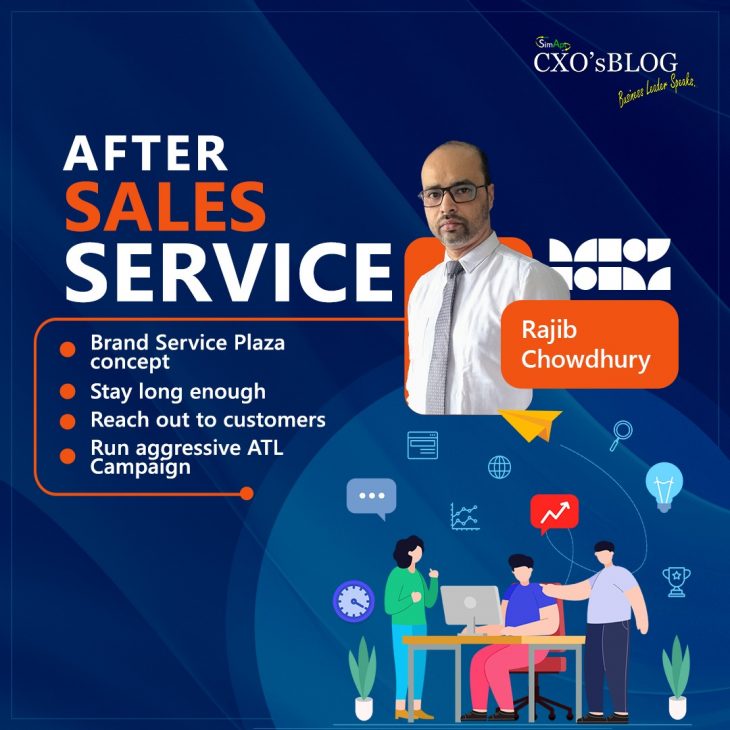Author: Rajib Chowdhury
I clearly remember, it was 1985, my dad finally booked our first Refrigerator. The Refrigerator was delivered almost a month after the booking. Unfortunately one decorative plastic cover was found broken. Toll free or customer care concept was not there even in the imagination of the brands. The dealer was the only channel of communication between the customer and the company. The dealer listened to our complaint, assured everything but did nothing to replace the broken part.
Back home, no one was actually bothered about the defective aesthetic part, as long as there is no problem in the cooling. In mid-eighties, a product performing its basic needs was enough for the customers to be happy. People had trust on the brands since they have seen them around for years, if not for generations.
23 years later, I joined the same company in their after sales service department. By that time, there were more than 10-12 brands (mostly new entrants) with extensive product ranges, fighting for the market share.
I thought the availability of so many brands with so many choices should make customers happy. But eventually it left the customers more confused. Customers want the product to stay at their home for at-least seven to ten years, but not sure which of these new brands will survive in the market for such a long time to support their product. Even the dealer community were confused. They were hesitant to be associated with new brands due to lack of visible commitment factor.
Today, to launch a product you do not need a big manufacturing facility, R&D facility, quality testing facility, suppliers, vendors, years of test marketing etc etc. Thanks to easy access to China, you can have product of your desired feature and price range overnight. Just hire a good marketing agency, organize few high noise dealer gatherings and your brand is placed in the market. This ease of test marketing new products prompted many fly-by-night players crowding the market every day. We have seen many of such high noise brands couldn’t even survive beyond two/three years.
So, it becomes more important now for the Dealers and customers to find out which brand is serious about their business and actually having long term planning? Easiest way is to look at their investment in after sales support.
After sales service is a non-tangible future driven investment, which only a brand with long term ambition can afford to do so. Today the dealer community as well as the customers understand this very well. The key deciding factor to go for a brand has shifted from product features to the credibility of the brand to support them in long term. Customers today are ready to pay more or settle for products with comparatively less features in exchange of service support assurance.
This shift of market dynamics and the mind set of customer will soon make “Product” an obsolete concept for any Marketer. The new buzz word will be “PRODICE” which means a combination of “Product” and “Service”.
Now the question is, a state of art customer care, excellent service network and response supported with advanced technology will be enough for a brand to survive? Answer is “BIG NO”. We need to understand that today the failure ratio of a refrigerator or washing machine is not even 2%, if we take TV or AC product, then also it will not go beyond 3-5%. So only these much of the customers will actually experience the “service”. Investment in Service infrastructure cannot be justified if it touches only 5% of the customers. We cannot leave 95% of our own customers and the huge number of outsiders who can be our future customers.
For a Brand to be successful, the After Sales Service will also have to be “visible”. There are no fixed thumb rules for this. Few examples which successful brands used are:
- Brand Service Plaza concept: Having a state of art service center with prominent frontage in the heart of the city. This is cost effective than having a Hoarding in that locations. Moreover the recall value to customer’s mind is many times higher than any other Marketing activity.
- Stay long enough in the same location, so that these service centers become important landmark for the city. It is a dream for any brand to have a landmark associated with their name or product. Just imagine otherwise how much a brand will need to spend to permanently rename a metro station or a bus stand in their name. The choice of location and options will also be limited by the availability.
- Reach out to customers or to be customers. Identify the target segment and showcase your service strength at their door-step.
- Run aggressive ATL campaign to showcase your service capabilities, which none of your competitor is having as of now.
When I started my career in customer service, in every meeting there were two very common questions I needed to respond to:
- Why your such and such cost is so high?
- How can we reduce the service cost?
Yes, in company’s overall planning, service was perceived as a necessary “cost” then.
Ten years later when I joined another Big Consumer Durable MNC, I faced a completely different question:
- “Why didn’t you spend the complete service budget allocated to you?”
This single question is the best answer for why some brands are growing so strong and some are just vanished from the market. For a successful brand, “After Sales Service” is no longer a “cost” but it is a part of their “Marketing Strategy”. Service is one of the very essential part of “Marketing Budget”.
This paradigm shift is the core now for showcasing brand’s commitment to their potential customers.
